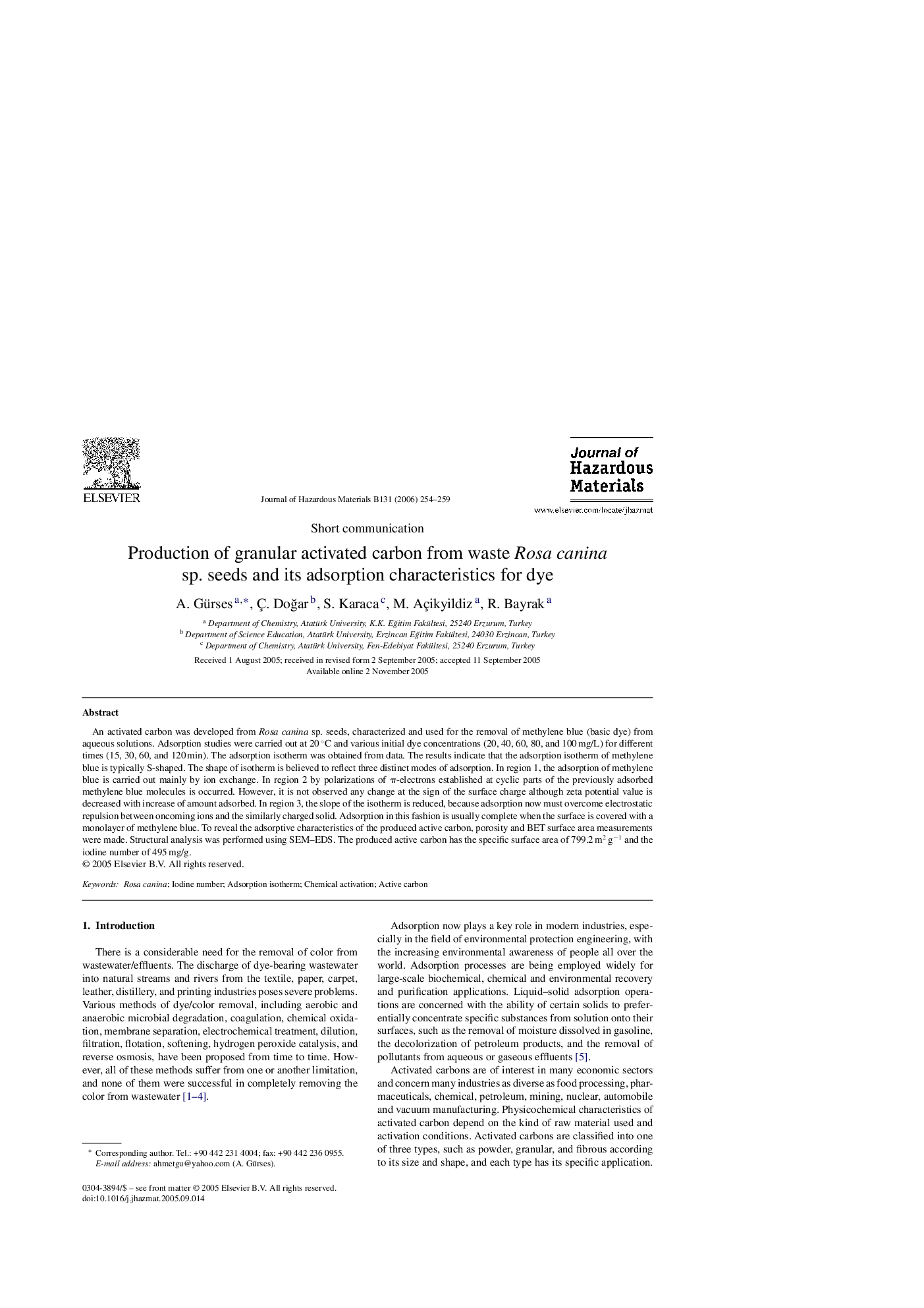| Article ID | Journal | Published Year | Pages | File Type |
|---|---|---|---|---|
| 585854 | Journal of Hazardous Materials | 2006 | 6 Pages |
An activated carbon was developed from Rosa canina sp. seeds, characterized and used for the removal of methylene blue (basic dye) from aqueous solutions. Adsorption studies were carried out at 20 °C and various initial dye concentrations (20, 40, 60, 80, and 100 mg/L) for different times (15, 30, 60, and 120 min). The adsorption isotherm was obtained from data. The results indicate that the adsorption isotherm of methylene blue is typically S-shaped. The shape of isotherm is believed to reflect three distinct modes of adsorption. In region 1, the adsorption of methylene blue is carried out mainly by ion exchange. In region 2 by polarizations of π-electrons established at cyclic parts of the previously adsorbed methylene blue molecules is occurred. However, it is not observed any change at the sign of the surface charge although zeta potential value is decreased with increase of amount adsorbed. In region 3, the slope of the isotherm is reduced, because adsorption now must overcome electrostatic repulsion between oncoming ions and the similarly charged solid. Adsorption in this fashion is usually complete when the surface is covered with a monolayer of methylene blue. To reveal the adsorptive characteristics of the produced active carbon, porosity and BET surface area measurements were made. Structural analysis was performed using SEM–EDS. The produced active carbon has the specific surface area of 799.2 m2 g−1 and the iodine number of 495 mg/g.
